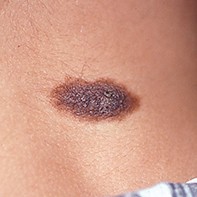Peer Reviewed
Feature Article Dermatology
Common skin problems in children. Part 4: birthmarks
Abstract
Although most birthmarks are small and harmless, they can sometimes be large and cause cosmetic or functional impairment. Others can indicate an underlying abnormality, and a few have a malignant potential. Some birthmarks can be removed, but others remain a challenge to treat even with present surgical and laser techniques.
Key Points
- ‘Birthmark’ is a lay term that has many medical equivalents, including neoplasms, hamartomas and malformations; not all are present at birth.
- Although most haemangiomas are uncomplicated, requiring no intervention, patients with facial haemangiomas need to be carefully observed; even a modest increase in size of these lesions can lead to substantial problems.
- The risk of melanoma in children is low; most melanocytic naevi are removed for cosmetic reasons, not malignancy.
- Children with capillary malformations (port wine stains) may be treated successfully with laser therapy; they should be referred for assessment by the age of 12 months.
- Naevus sebaceous is the most common epidermal naevus and one of the few with a malignant potential.
- Most small birthmarks can be removed; the decision to remove birthmarks should, in most cases, involve the child.
Purchase the PDF version of this article
Already a subscriber? Login here.

